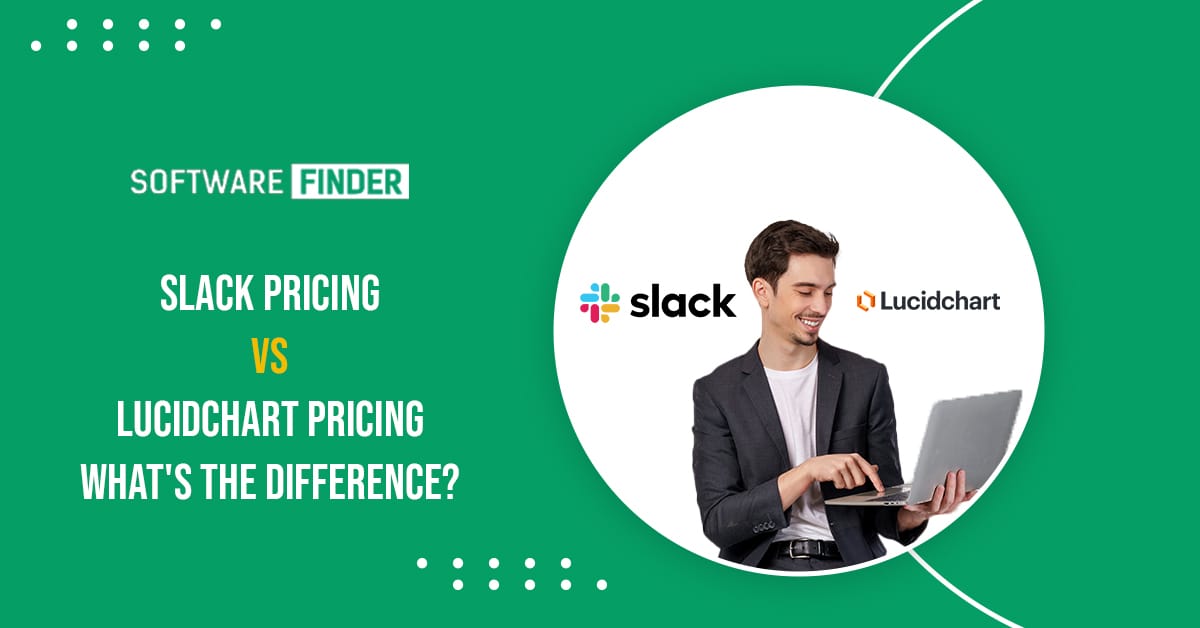
Slack Pricing Vs. Lucidchart Pricing: What’s The Difference?
When selecting the right tools for your team, pricing is often crucial. Two popular software solutions that cater to different collaboration needs are Slack and Lucidchart. Slack is a communication and collaboration platform, while Lucidchart is a visual diagramming and flowcharting tool. In this blog post, we’ll delve into a detailed comparison of Slack pricing vs. Lucidchart pricing to help you make an informed decision based on your team’s requirements and budget.
Slack Project Management Software
Slack project management software revolutionizes team communication and collaboration, offering a robust platform that keeps teams connected and organized. With its intuitive interface and extensive features, Slack provides a centralized hub for project discussions, file sharing, and task management.
Teams can create channels dedicated to specific projects, enabling focused conversations and real-time updates. Integrating third-party tools and apps further enhances productivity by streamlining workflows and automating tasks.
From assigning tasks and setting deadlines to tracking project progress and receiving notifications, Slack software empowers teams to manage projects effectively, foster seamless collaboration, and achieve their goals efficiently.
Slack Software Features
Channels and Messaging
Slack provides a flexible and organized way to communicate with team members through channels. Channels can be created for different projects, teams, or topics, allowing for focused discussions and information sharing.
Users can send messages, share files, and mention specific team members or channels to communicate effectively. The threaded messaging feature keeps conversations organized and easily accessible, ensuring critical information is not lost within a busy chat environment.
Integration with Third-Party Tools
Slack integrates with various third-party applications and services, providing a centralized hub for all team activities. Slack allows teams to connect and collaborate using their preferred tools, from project management tools to file storage platforms.
This integration capability streamlines workflows, eliminates the need to switch between multiple applications and increases productivity by bringing all relevant information and actions into one place.
Automation and Workflow Customization
Slack offers automation and customization features that help teams streamline workflows and automate repetitive tasks. With the help of Slack’s workflow builder and app integrations, users can create automated actions, such as sending notifications, updating statuses, or triggering specific tasks based on predefined rules.
This feature saves time and reduces manual effort, allowing team members to focus on higher-value work and improving overall productivity.
Slack Pricing
Slack offers several pricing tiers to accommodate teams of varying sizes and needs. Slack pricing starts with a free plan that provides access to basic features and a limited message history. Slack offers paid plans for small to medium-sized teams or those looking for additional functionality.
The pricing for their paid plans varies based on the number of users and additional features. The Standard plan starts at $6.67 per user per month (billed annually), offering increased message history, file storage, and more integrations. The Plus plan, priced at $12.50 per user per month (billed annually), includes advanced security features, compliance requirements, and additional administrative controls.
To better understand Slack’s capabilities, users can request a demo from the Slack team. The Slack demo provides an opportunity to see the software in action, explore its features, and learn how it can benefit their specific team or organization.
Slack Reviews
User reviews for Slack are generally positive, highlighting its effectiveness in enhancing team communication and collaboration. Users appreciate its user-friendly interface, ease of use, and the ability to create dedicated channels for focused discussions. Integrating third-party tools and apps is also praised for streamlining workflows and increasing productivity.
However, some users mention that the software’s pricing can be expensive for larger teams, especially when additional features and integrations are required. It’s always recommended to explore multiple user reviews and testimonials to comprehensively understand user experiences with the software.
Lucidchart Project Management Software
Lucidchart project management software is a powerful visual diagramming tool that enhances project planning and execution. With its intuitive interface and vast pre-built templates, Lucidchart allows teams to create professional flowcharts, diagrams, and visual representations of project workflows.
The software’s drag-and-drop functionality and features enable teams to collaborate in real-time, ensuring everyone is on the same page. The integrations provided by the Lucidchart software with other project management tools enhance efficiency and streamlines the process. With Lucidchart, teams can visually map out project plans, identify dependencies, and communicate complex ideas effectively, leading to improved project outcomes and successful execution.
Lucidchart Software Features
Intuitive Diagramming Tools
Lucidchart provides a user-friendly interface and various diagramming tools to create professional and visually appealing diagrams. From flowcharts and process maps to org charts and wireframes, Lucidchart offers a comprehensive library of shapes, icons, and templates.
The intuitive drag-and-drop functionality makes it easy for users to build and customize diagrams, allowing for quick and efficient visualization of complex ideas and workflows.
Real-time Collaboration
Lucidchart facilitates seamless teamwork with its real-time collaboration features. Multiple users can work on the same diagram simultaneously, seeing each other’s changes in real time. It enables effective communication, feedback, and collaboration among team members, whether they are in the same office or working remotely.
The ability to leave comments, suggest edits, and track changes ensure smooth collaboration and streamlines the review process.
Integration with Project Management Tools
Lucidchart integrates seamlessly with popular project management tools, enhancing the planning and execution of projects. By connecting Lucidchart with project management platforms, teams can easily import data, create project timelines, visualize dependencies, and track progress.
This integration enables project teams to align visual representations with project plans, ensuring clarity and accuracy in project execution.
Lucidchart Pricing
Lucidchart follows a pricing structure similar to Slack, offering individual and team plans. Their plans range from a free plan with limited features to a Pro plan priced at $9.95 per user per month (billed annually), providing advanced functionality and collaboration capabilities.
For teams, Lucidchart offers Team and Enterprise plans, which are priced based on the number of users and include additional features like centralized admin controls, advanced security, and integrations. The Team plan starts at $20 per user per month (billed annually), while the Enterprise plan offers custom pricing tailored to specific requirements.
To explore Lucidchart’s capabilities, users can request a demo from the Lucidchart team. The Lucidchart demo allows users to see the software in action, understand its features, and evaluate its suitability for their project management needs.
Lucidchart Reviews
User reviews for Lucidchart are generally positive, highlighting the software’s intuitive interface, extensive template library, and seamless collaboration features. Users appreciate the ease of creating professional diagrams and flowcharts and the ability to work collaboratively in real-time.
Users also praise Lucidchart’s customer support and regular updates. However, exploring multiple user reviews and testimonials is always advisable to gain a comprehensive understanding of user experiences with the software.
Slack Pricing Vs. Lucidchart Pricing—Final Thoughts
When comparing Slack and Lucidchart pricing, it’s essential to consider your team’s specific needs and the features each platform offers. Slack’s pricing primarily focuses on team communication and collaboration, with additional features and flexibility as you move up the pricing tiers. On the other hand, Lucidchart’s pricing caters more towards visual diagramming and flowcharting needs, with options for both individuals and teams.
Ultimately, the choice between Slack and Lucidchart should be based on the nature of your team’s work and the functionalities required. Slack may be the better fit if your team heavily relies on real-time communication and collaboration. However, if visualizing ideas and creating diagrams play a more significant role, Lucidchart could be the ideal choice.
In conclusion, comparing Slack pricing vs. Lucidchart pricing will help you determine which software best aligns with your team’s needs and budget. Assessing the specific features, integrations, and scalability options will enable you to make an informed decision that enhances your team’s collaboration and productivity.



